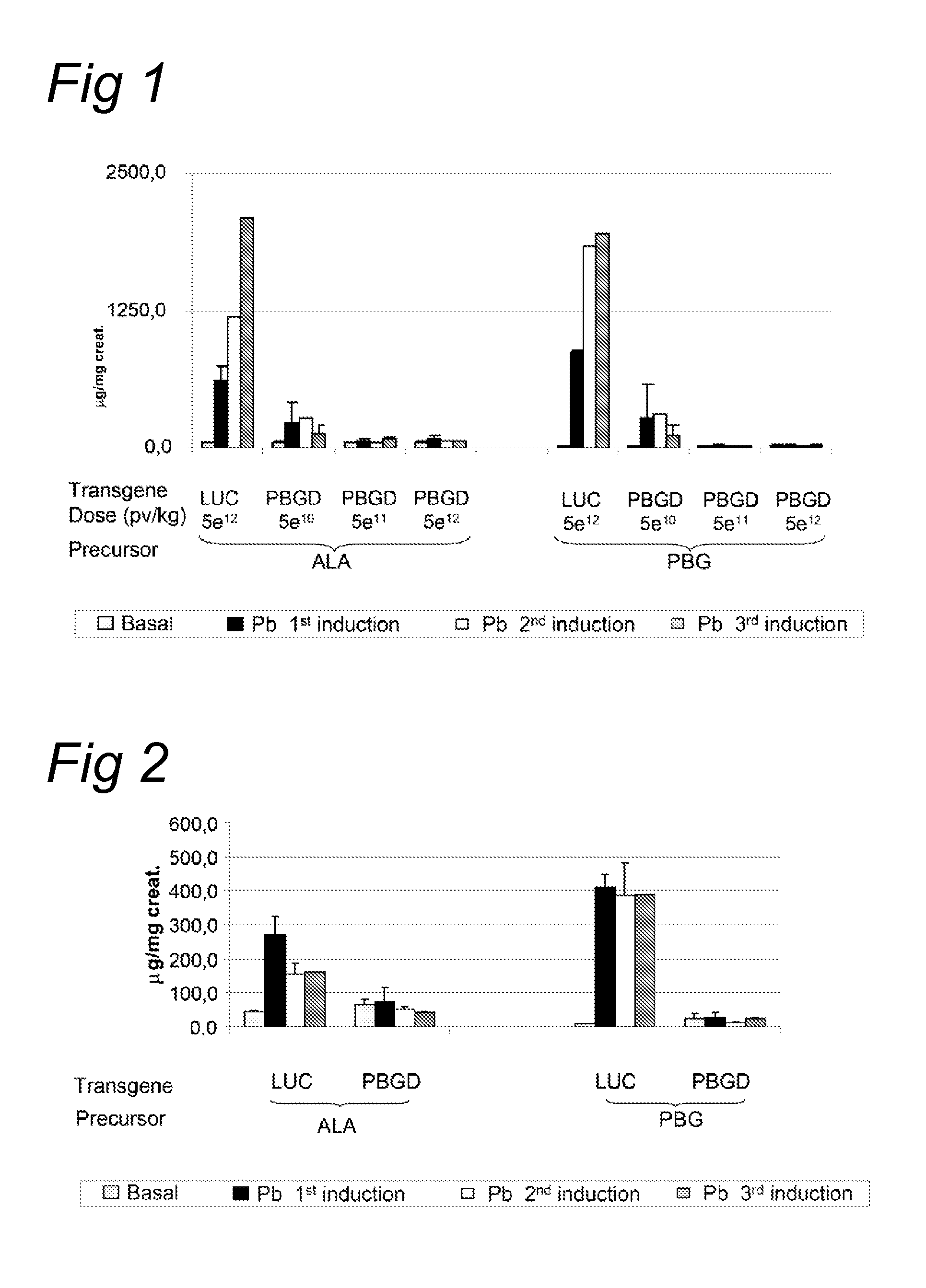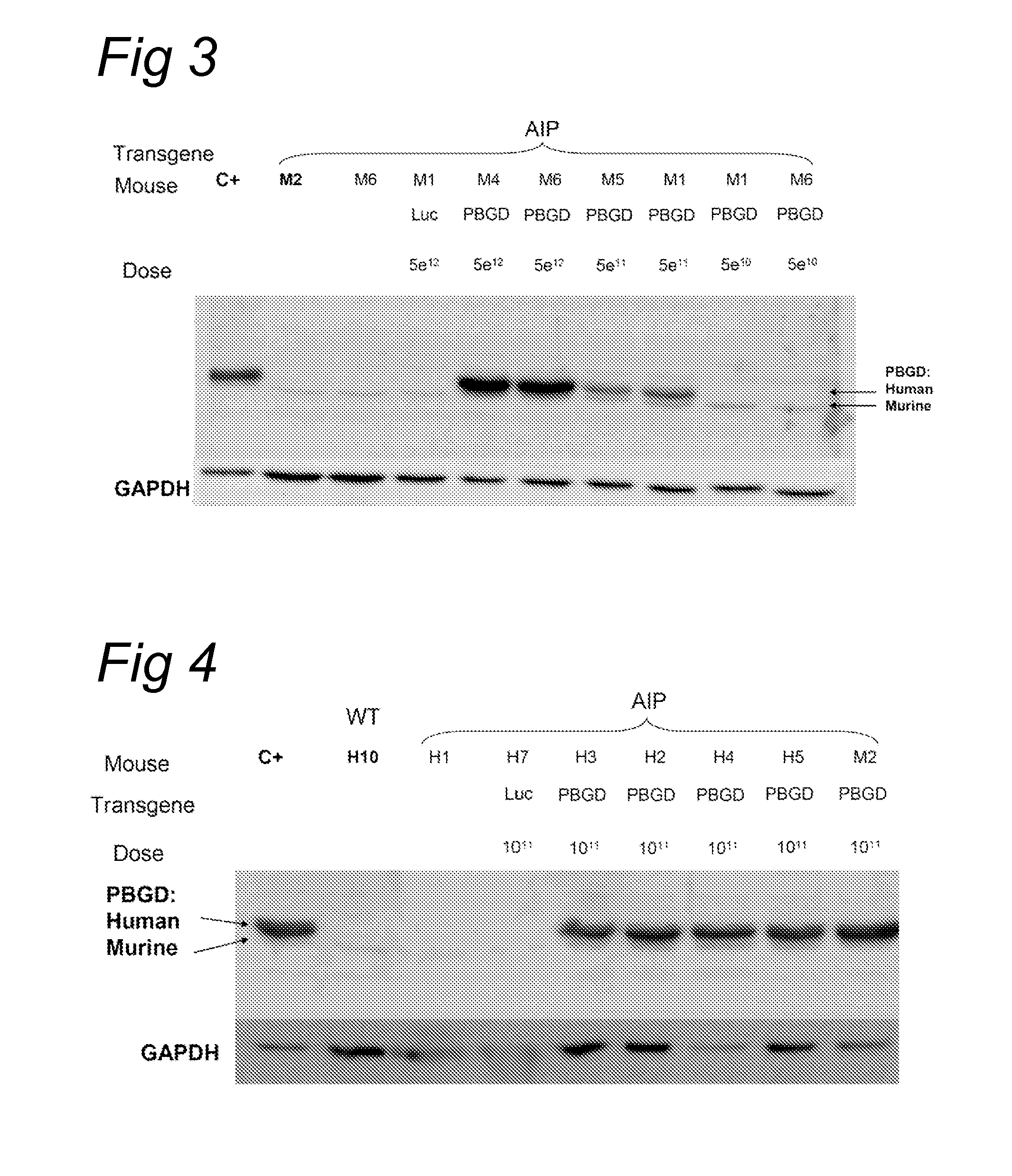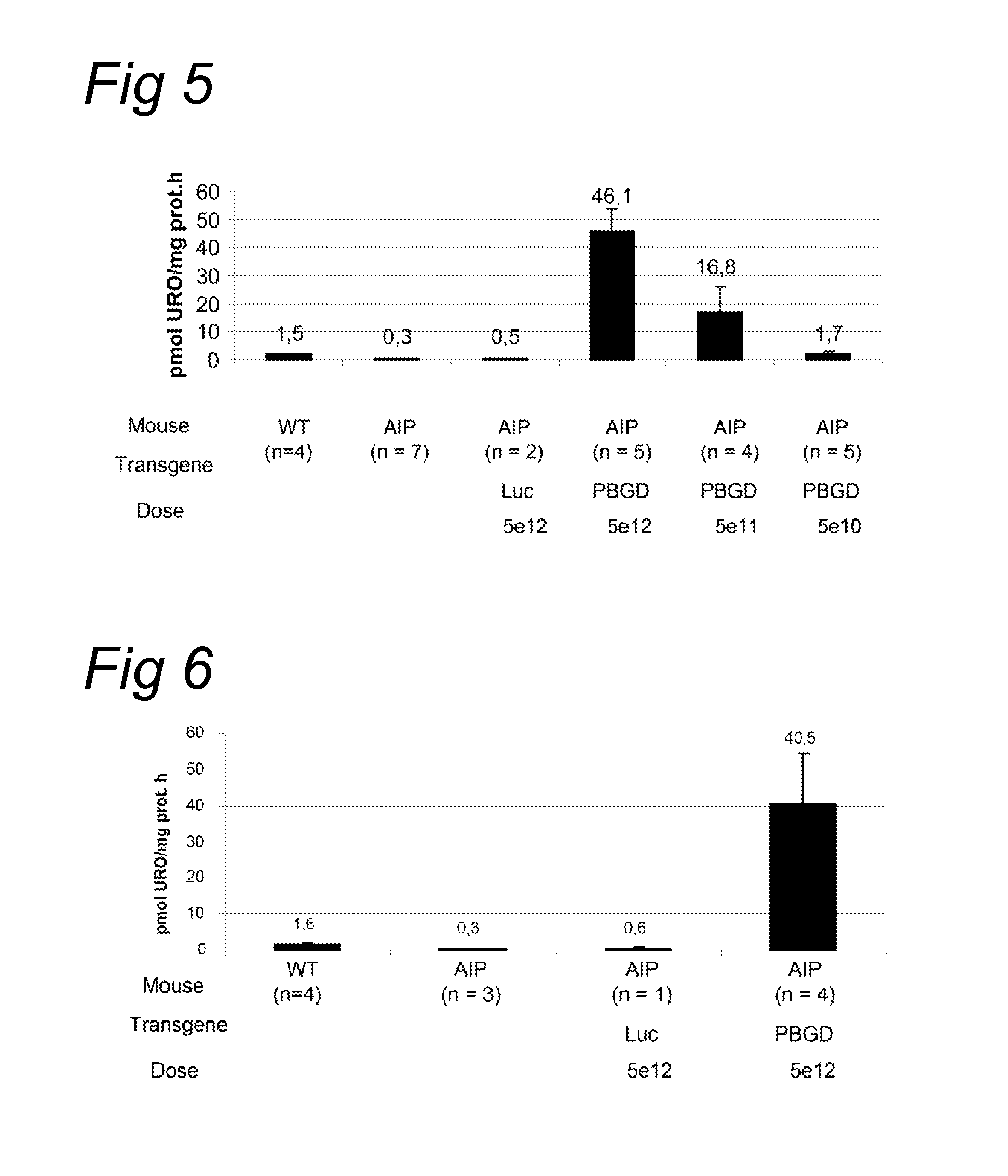Porphobilinogen deaminase gene therapy
a technology of pbgd and deaminase, which is applied in the field of nucleotide sequences, can solve the problems of insufficient pbgd for symptoms to appear, inability to carry out heme-mediated repression of ala synthetase (alas1), and inability to carry out heme-mediated repression, so as to maximize the number of matches and minimize the number of gaps
- Summary
- Abstract
- Description
- Claims
- Application Information
AI Technical Summary
Benefits of technology
Problems solved by technology
Method used
Image
Examples
example 1
AAV-Mediated Liver-Specific Expression of Porphobilinogen Deaminase Reverts Biochemical Alterations and Protects Against Motor Neuropathy in a Mouse Model of Acute Intermittent Porphyria
1.1 Materials and Methods.
1.1.1 Animal Model
[0091]The acute intermittent porphyria (AIP) mice were generated by gene targeting as described by Lindberg et al. (Nature genetics, 1996). The T1 and T2 transgenic strains were kindly provided by Prof. Urs Meyer from the University of Basel and the animal facility of the University of Navarra has established a colony of these animals. In T1 transgenic animals a Neomycin gene has been inserted in the first exon of the PBGD gene and homozygous animal have a 45% loss of the PBGD activity in the liver. In T2 mice the Neomycin gene has been inserted in the first intron of the PBGD gene. Homozygous condition is lethal and heterozygotes animals exhibit a 43% loss of PBGD activity in the liver. Neither of the strains showed signs of porphyria nor increased urinary...
example 2
Increased In Vivo Enzymatic Activity from Codon-optimized PBGD cDNA
2.1 Construction of the Plasmids Used for Hydrodynamic Injection and AAV Gene Delivery with wtPBGD and coPBGD
[0113]Plasmids used in this study contain expression cassettes with the following elements in a 5′ to 3′ order: a liver-specific promoter EalbAATp with regulatory sequences from the albumin enhancer (Kramer et al., 2003, Mol Ther. 7(3):375-85), the housekeeping (i.e. non-Erythroid) PBGD cDNA (GenBank acc #X04808). The 3′ UTR from the PBGD (bases 1463-1487 GenBank acc #NM—000190) and the PBGD polyadenylation sequence [poly(A) PBGD] (bases 9586-9629 GenBank acc #M95623). The two plasmids containing these expression cassettes are named psl1180-pAAT-PBGD-PolyA PBGD and psl1180-pAAT-coPBGD-PolyA PBGD and differ only in the PBGD coding sequence as explained below.
[0114]To generate a codon-optimized PBGD, the gene Bank sequence #NM—000190 corresponding to the human PBGD non-erythroid cDNA was adapted in codon usage t...
PUM
| Property | Measurement | Unit |
|---|---|---|
| diameter | aaaaa | aaaaa |
| pH | aaaaa | aaaaa |
| window emission peak | aaaaa | aaaaa |
Abstract
Description
Claims
Application Information
 Login to View More
Login to View More - R&D
- Intellectual Property
- Life Sciences
- Materials
- Tech Scout
- Unparalleled Data Quality
- Higher Quality Content
- 60% Fewer Hallucinations
Browse by: Latest US Patents, China's latest patents, Technical Efficacy Thesaurus, Application Domain, Technology Topic, Popular Technical Reports.
© 2025 PatSnap. All rights reserved.Legal|Privacy policy|Modern Slavery Act Transparency Statement|Sitemap|About US| Contact US: help@patsnap.com



